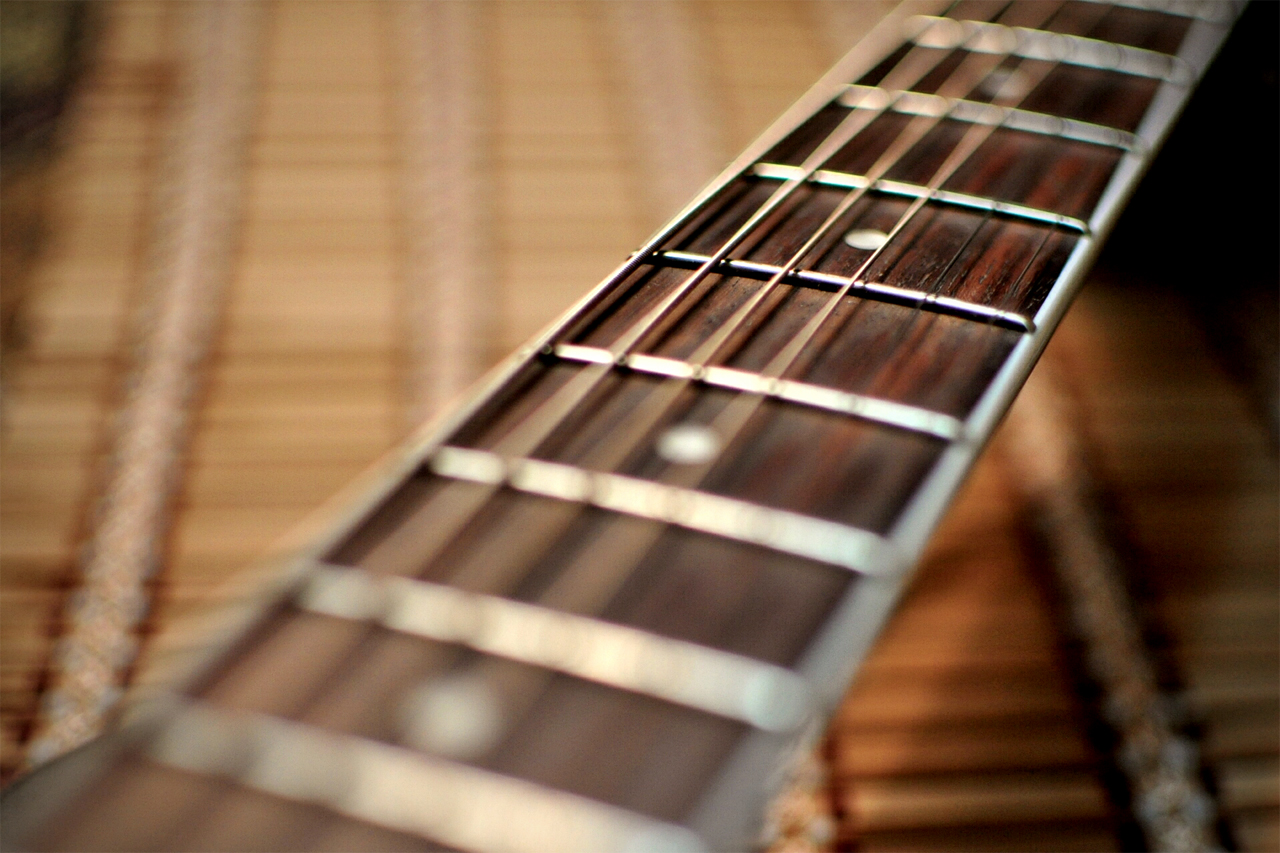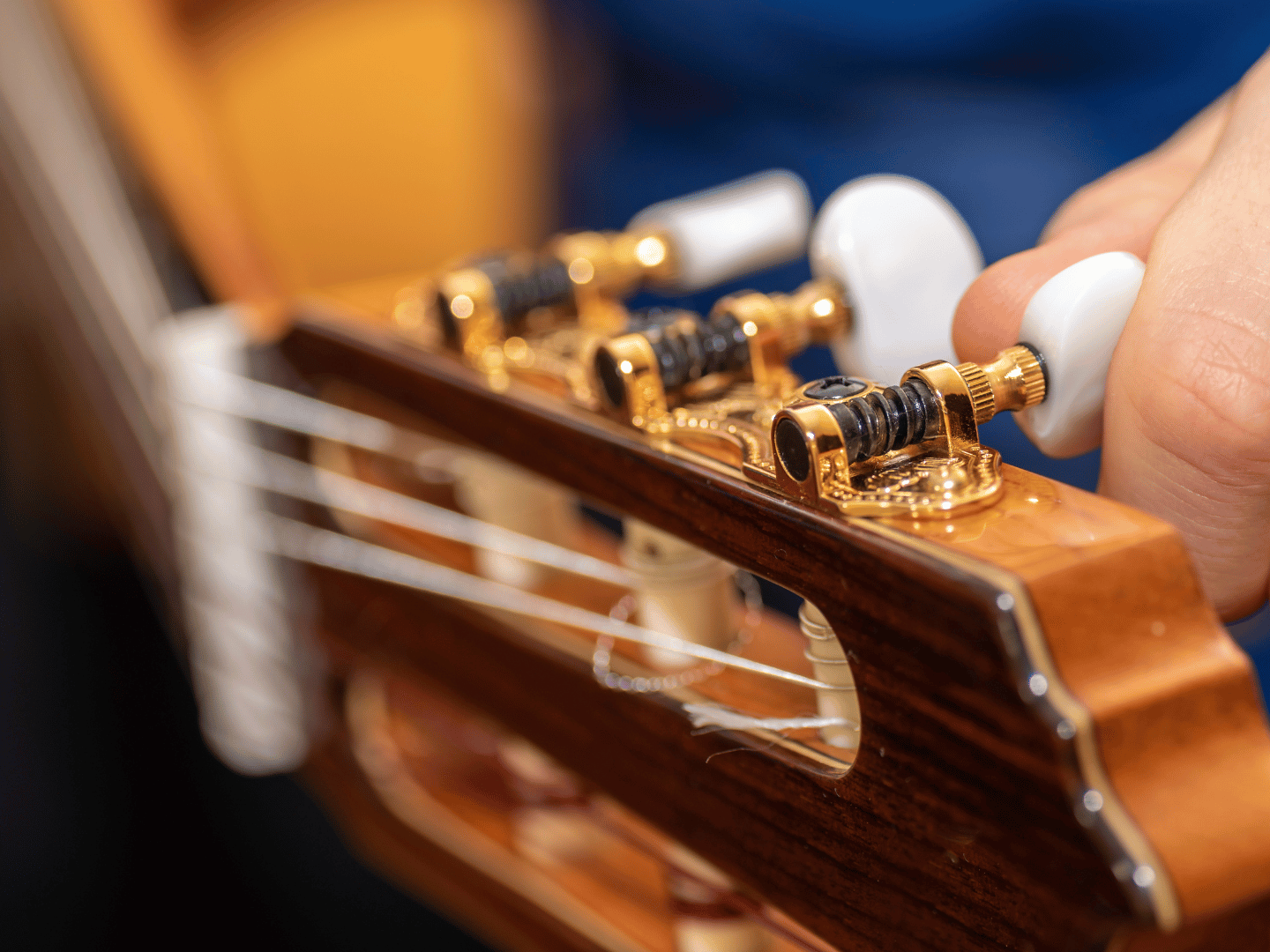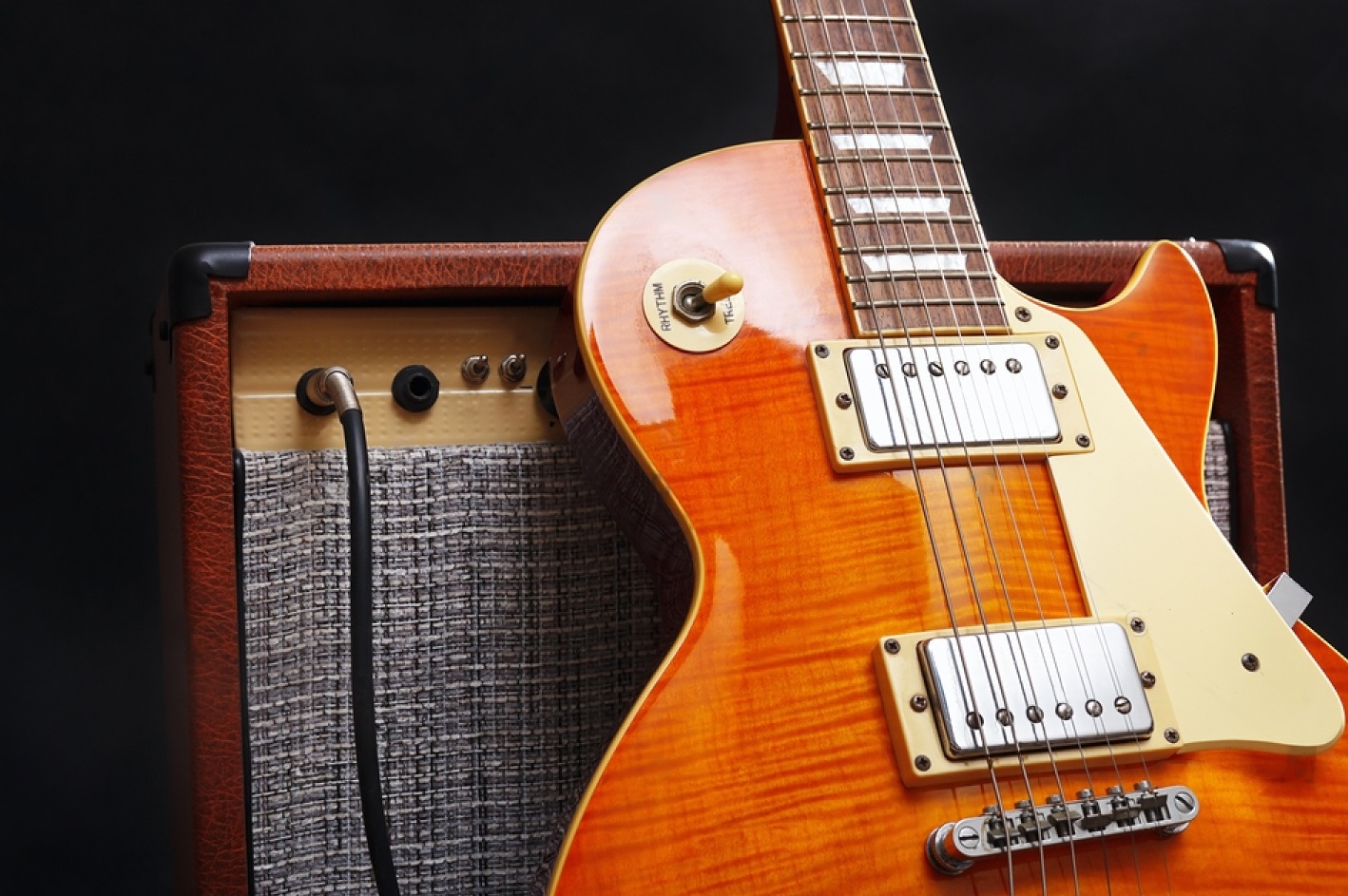Removing stickers from your guitar can be a delicate task.
It requires precision, care, and the right materials to ensure the process is unsuccessful without damaging the instrument.
This blog post is dedicated to guiding you through this process in an easy and straightforward manner.
Whether it’s a sticker placed years ago or more recent, the methods outlined will help you do away with them within a span of 120 seconds at most.
Please note that it’s essential to approach this task patiently to prevent any potential damage to your guitar’s surface.
As we proceed, you’ll learn about the necessary preparations and steps that need to be taken.
Table of Contents
- How To Remove Stickers From A Guitar In Less Than 2 Minutes
- Tools Needed for Removing Stickers
- Step-by-Step Guide: How to Safely Remove Stickers?
- Why Using a Hairdryer Is Effective for Sticker Removal?
- What to Do If a Sticker Residue is Left Behind?
- Tips for Removing Older, More Stubborn Stickers
- Things To Consider When Removing Stickers to Avoid Damage
- Alternatives to Using a Hairdryer for Sticker Removal
- Using Goo Gone for Removing Sticker Residue: Pros and Cons
- The Bottom Line
How To Remove Stickers From A Guitar In Less Than 2 Minutes
To remove stickers from a guitar in less than 2 minutes, use a hairdryer to soften the adhesive by directing the heat towards the sticker for about a minute. Next, gently peel off the sticker from one corner, ensuring it comes off cleanly. If any residue is left behind, it can be wiped off with a cloth dipped in mineral oil or a product like “Goo Gone”.
Continuing from the above, it’s worth noting that a myriad of factors can affect how easy or difficult it might be to remove a sticker from your guitar, such as the quality of the sticker’s glue, the age of the sticker, and the finish on your guitar.
For instance, a sticker with more robust adhesive may need repeated applications of heat from the hairdryer.
As such, it becomes crucial to discuss how to account for these factors when embarking on this process.
Additionally, understanding the different types of guitar finishes and how to properly care for them is also essential to prevent damage when removing the sticker.
We also delve into alternative methods of removing stickers and their respective efficacy in comparison to the aforementioned approach.
We believe that equipping you with the knowledge of these additional aspects will be beneficial in maintaining your guitar’s aesthetic appeal whilst ensuring its longevity.
Tools Needed for Removing Stickers
To remove a sticker from your guitar or any other surface, there are several essential tools you’ll need.
The required tools don’t have to be high tech or pricey, most of them can be found in your house.
– Hairdryer
An electric hairdryer tops the list as an invaluable tool in your sticker removal kit.
This everyday household item is effective in heating up and loosening the adhesive bind of the sticker to the instrument’s surface.
Many people overlook the power of a hairdryer when struggling with stubborn stickers.
But in fact, it provides a safe and effective method of lifting stickers off without causing damage to your guitar’s finish.
This everyday household item is effective in heating up and loosening the adhesive bind of the sticker to the instrument’s surface.
Yes, it is not a conventional use of the hairdryer, but it works, and that’s what matters.
This fact is further backed up by several DIY enthusiasts and experts.
Its advantage lies in its ability to provide controlled and directed heat, vital in the sticker removal process.
– Microfiber Cloth
Next is a good quality microfiber cloth.
While any clean, soft cloth will get the job done, using a microfiber cloth allows better control and more effective sticker and residue lifting.
Microfiber cloths are soft and have a superior ability to trap dirt, dust, and in this case, sticker residues.
While any clean, soft cloth will get the job done, using a microfiber cloth allows better control and more effective sticker and residue lifting.
Surely, you want to protect your guitar surface while cleaning, so hardness is a factor.
Remember, abrasiveness could lead to unwanted scratches or scuffs on your guitar’s surface, which is why a microfiber cloth is highly recommended over other types.
– Adhesive Removers
The last essential tool you need is an adhesive remover such as Goo Gone.
These are specially formulated liquids that are expert at tackling stubborn adhesives.
After the main sticker has been removed, there’s often glue or residue left behind.
An adhesive remover can ease your work by ensuring your guitar surface remains clean and pristine.
Step-by-Step Guide: How to Safely Remove Stickers?
The first step in safely removing stickers is to understand the process.
It’s important to know what tools you will need, and what steps to follow in order to avoid damaging your guitar.
Always remember, if you’re not sure about something, it’s better to seek expert advice before proceeding.
“No haste, as you don’t want to cause damage to the guitar.
Take your time and follow the right steps.”
Rushing could lead to damage and that’s certainly not the goal of this exercise.
The aim is to safely get rid of the sticker without leaving any traces of it on the guitar.
Remember, patience is key in this task.
Yanking the sticker off in one swift move might seem faster, but it’s more likely to leave residue or even cause scratches.
Once you are familiar with the process, start by gathering all the necessary tools.
You may already have these around your house, but if not, they can usually be easily sourced from a hardware store or even online.
These tools may include a plastic scraper, a hair dryer, and a clean cloth.
A plastic scraper will help to gently ease the sticker off the surface, a hairdryer can be used to apply heat to loosen the sticker and a clean cloth is needed to gently rub off any residue.
Remember, it’s vital to avoid any tools that could potentially damage the finish of your guitar.
Therefore, avoid metallic or overly harsh tools.
Start the removal process by applying heat to the sticker with your hairdryer.
Hold the hairdryer about a few inches away from the sticker and apply heat evenly.
After that, use the plastic scraper to gently peel away the heated sticker.
It should come off relatively easily, and if it doesn’t, apply more heat and try again.
Take your time during the heating and removal process to avoid doing any damage.
The balance here is to apply just enough heat to ease the sticker off, but not so much that you risk damaging the guitar.
Always keep this balance in mind during the sticker removal process.
Finally, use the clean cloth to wipe over the area where the sticker was once located.
This ensures any remaining sticker adhesive is removed, leaving a fresh and clean surface behind.
Why Using a Hairdryer Is Effective for Sticker Removal?
Using a hairdryer to remove stickers from your guitar’s body is an effective and non-destructive method.
The heat from the hairdryer softens the sticker’s adhesive, which makes it easier to remove.
Applying heat makes it easier to peel away the stickers without leaving a sticky adhesive residue.
This method has been tried and tested and has been found to be highly effective in many cases.
However, careful attention must be paid to prevent overheating, which can potentially cause damage to the surface.
It’s quite simple and straightforward to use a hairdryer for this task.
Start by plugging in your hairdryer and setting it on a low heat setting.
Holding it a few inches away, direct the warm air over the entire surface of the sticker for a few minutes.
Ensure you hold the hairdryer a few inches away to prevent overheating.
As the adhesive backing of the sticker begins to heat up and soften, you can begin to peel away the sticker with your fingers or a plastic scraper.
Remember to work slowly and gently.
If any part of the sticker doesn’t seem to be coming off easily, reapply heat to that section and continue.
If this task is performed with patience and attention, using a hairdryer will not cause any damage to your guitar’s surface.
The trick is to make sure you’re not exposing any one area to heat for too long.
By keeping the hairdryer a safe distance away, and moving it regularly, you should be able to minimize the risk.
This technique can help to preserve the integrity and finish of your guitar, while effectively removing any unwanted stickers.
What to Do If a Sticker Residue is Left Behind?
It’s often a common scenario: you managed to remove the sticker, but a sticky residue is left on your guitar.
Firstly, it’s important to understand why this happens.
The adhesive used in the majority of stickers is designed to provide a firm hold.
When we try to remove the sticker, the paper part detaches, leaving the adhesive behind.
This sticky residue can be even more annoying than the sticker itself, as it attracts dirt, dust and it may also damage the surface of your guitar over time.
Moving forward, the next step involves addressing this sticky issue.
There are a variety of household items and specialized products that can be used to remove this residue.
A mixture of cooking oil and baking soda has proven to be effective for many people.
Vinegar, rubbing alcohol, or WD-40 can also be used with good results.
On the specialized products side, there are adhesive removers like Goo Gone, which are designed specifically for this purpose.
The exact choice depends on the specifics of your guitar’s finish and the materials it’s made of, so always test the cleaning solution on an inconspicuous area first, to prevent any undesired effects.
Once you’ve chosen your cleaning solution, apply it to the affected area.
Let it sit for a few minutes to soften the residue, then gently scrub it off using a non-abrasive cloth or sponge.
Do not apply excessive force when scrubbing, as you may harm the surface of your guitar.
The key is to be patient and persistent, reapplying the solution and repeating the scrubbing process as many times as needed, until the residue is fully removed.
After removing the residue, wash the area with warm water and a mild soap, to remove any traces of the cleaning solution.
Once the guitar is fully dry, consider applying a guitar polish or wax, to restore the shine and provide a protective layer.
This way, you’ll preserve the beauty of your guitar and help prevent any future sticker residues from sticking too firmly.
Consider applying a guitar polish or wax, to restore the shine and provide a protective layer.
Following these steps will help you remove not just the annoying sticker itself, but also the sticky residues they leave behind, while taking good care of your guitar’s top finish.
Tips for Removing Older, More Stubborn Stickers
Removing older, stubborn stickers from your guitar can be a bit challenging, but with patience and the right tools, you can do it without causing damage to your instrument.
One tip to remember is that older stickers might have become more embedded into the guitar’s surface over time.
Meaning, pulling them off manually might cause some surface damage, especially if the guitar has a delicate finish.
Therefore, it is advisable to avoid using sharp objects like knives or razor blades to pry the stickers off as they can scratch the surface of your guitar.
– Soaking the Sticker
A better approach is to gently soak the sticker with a warm, damp cloth.
This can help to loosen the sticker and make it easier to peel off.
Ensure the cloth isn’t too wet to prevent water damage to your instrument.
A gentle rub in a circular motion could also do the trick without inflicting harm to the guitar.
Remember, the key is being patient and allowing the damp stickers enough time to loosen.
A better approach is to gently soak the sticker with a warm, damp cloth.
Understandably, this method might not work for all stickers, especially those that are extremely old and stubborn.
In such cases, you might need to consider using a specialized sticker removing solution.
– Using a Sticker Removing Solution
There are several safe, effective sticker removing solutions on the market.
One popular product is the Goo Gone Sticker Lifter, which is formulated to penetrate and dissolve even the toughest adhesive residues.
A gentle application of this solution can effectively loosen and take off the stubborn sticker.
Well, a video to give you an insight into the best practices to remove the residue left by stickers.
Through watching, You can learn an effective technique using a commonly found product at home.
There are several safe, effective sticker removing solutions on the market.
However, it’s crucial to follow the manufacturer’s directions strictly when using these products.
Some may recommend testing the product on an inconspicuous area of your guitar first to ensure it does not discolor or otherwise damage the guitar’s finish.
While older, stubborn stickers can be frustrating to remove, these tips should give you confidence implementing a safe and effective sticker removal process.
Things To Consider When Removing Stickers to Avoid Damage
The process of removing stickers from your guitar requires due diligence and care to avoid causing unnecessary harm to the instrument.
Firstly, it is crucial to understand that different materials react differently to cleaning methods and solvents.
Therefore, you must do a patch test.
The patch test involves applying a bit of the solvent you intend to use in a less conspicuous area of the guitar.
If no harm is done, you can proceed with confidence.
Your choice of tools for this process can greatly influence the final outcome.
A good rule of thumb is to use plastic or rubber-edged tools that are less likely to cause scratches.
The relevance of this statement can’t be stressed enough.
For instance, a credit card can be a handy tool for scraping off stubborn stickers without the risk of damaging the guitar surface.
As recommended in various online platforms, a hairdryer works wonders in heating up the sticker adhesive, making it easier to peel off.
However, you should be cautious when using this technique.
Excessive heat can potentially cause damage, especially where the guitar’s finish is concerned.
Therefore, it’s advisable to keep the hairdryer at a considerable distance and use the low or medium setting.
Allowing the heated area to cool naturally before proceeding reduces the risk of overheating significantly.
Similarly, time is an important factor while heating the stickers.
Heating the stickers for too long can lead to the sticker melting and creating an even bigger mess.
Simultaneously, not applying enough heat will keep the adhesive still effective, making removal difficult.
Another important factor to consider is the solvent you use to dissolve the stubborn sticker residues.
While alcohol and water solutions are commonly used, guitar-friendly products like Goo Gone are designed to be gentle on your instrument’s surface.
Avoid using harsh chemicals that risk damaging the finish of the guitar.
However, the same principle of patch testing applies before the wide-scale application of any solvent.
Indeed, some chemicals have proven to be corrosive and leave notable blemishes on the guitar’s finish.
As such, it is wise to invest in methods affirmed by professional luthiers and guitar techs.
This will ensure the integrity of your instrument remains uncompromised in your quest to remove stickers.
Alternatives to Using a Hairdryer for Sticker Removal
In the process of removing stickers from various surfaces, it’s important to realize that there are indeed alternative methods to using a hairdryer.
Whether due to not having a hairdryer to hand or simply desiring to use a different technique, having a broad range of strategies can certainly be beneficial.
– Using Vinegar
One such method involves using a common household substance: vinegar.
Vinegar’s acidic nature can help to break down the adhesives found in stickers, making them easier to remove.
To use this method, simply soak the sticker in vinegar for a few minutes before trying to scrape it off.
Using a simple substance like vinegar can effectively break down the adhesive and help to make sticker removal easier.
Aside from being an effective solution, vinegar is also a readily available, eco-friendly, and inexpensive option.
Therefore, it can be considered an excellent alternative when looking to avoid the use of a hairdryer in sticker removal.
– Applying Rubbing Alcohol
Another alternative involves using rubbing alcohol.
The solvent properties of rubbing alcohol can dissolve the sticker’s adhesive, allowing for easy removal.
You only need a small amount applied with a cloth or sponge directly on the sticker for this method to work.
The solvent properties of rubbing alcohol allow for an effortless sticker removal process.
Just like vinegar, rubbing alcohol is not only effective but also cheap and easily accessible.
However, remember always to test it on an inconspicuous area of the surface before use, as it can occasionally cause discoloration.
– Using a Plastic Scraper
Finally, if you’re looking for a physical method rather than a substance, a plastic scraper can be used to remove stickers.
This is especially useful when dealing with surfaces that can’t tolerate liquids.
The scraper allows you to get under the edge of the sticker and gradually peel it off.
If you don’t want to use any substance, a plastic scraper can be an efficient tool for sticker removal.
The secret when using a scraper is to go slow and steady, ensuring the sticker comes off cleanly without leaving any residue behind.
Remember, however, to always use plastic rather than metal scrapers to avoid potential surface scratches.
This embedded video provides visual demonstrations of several different techniques for removing sticker residue from various surfaces.
By viewing it, you might gain a clearer understanding of the methods discussed and how best to apply them in your own sticker removal process.
Regardless of the method you choose, remember that patience is key.
Stickers can often be stubborn, but with the right tools and techniques, you’re sure to successfully remove them without causing any damage to the underlying surface.
Using Goo Gone for Removing Sticker Residue: Pros and Cons
Sticker residue can be a pesky problem to deal with, especially on wood surfaces like a guitar.
One of the most popular products used for this purpose is Goo Gone.
Goo Gone is a potent solvent that works to dissolve adhesives, making it an effective tool for removing sticker residue.
While it was not specifically designed for use on wood surfaces, many individuals have found success using the product for this purpose.
What makes Goo Gone successful is its ability to break down the adhesive’s bonds, allowing for easy removal.
Simply apply a small amount of it to a soft cloth and gently wipe the residue away.
However, like all solutions, Goo Gone also has its disadvantages, which must be taken into account.
One of the most important considerations when using Goo Gone is the potential damage it can cause to a guitar’s finish.
This concern, however, does not affect all kinds of guitars.
One of the most important considerations when using Goo Gone is the potential damage it can cause to a guitar’s finish.
The level of potential damage depends on the type of finish used on the guitar.
Matte finishes, in particular, can be vulnerable to the potent solvent in Goo Gone.
It’s always a good idea to test Goo Gone on an inconspicuous area of the guitar before applying it to a larger area.
– Benefits of Using Goo Gone
The efficacy of Goo Gone in removing sticker residue is one of its biggest benefits.
It’s a popular choice because it generally does an excellent job of removing sticker residue without leaving a messy aftermath.
The easy application process is another plus.
There are no complicated procedures required; simply apply, wait, and wipe away the residue.
Additionally, most people find the citrus scent of Goo Gone pleasing, unlike many other similar products with strong chemical odours.
Simply apply, wait, and wipe away the residue.
The simple process and effective result make Goo Gone a popular choice.
Its scent further adds to the overall experience, making the cleaning process less burdensome.
– Drawbacks of Using Goo Gone
While Goo Gone is effective and easy to use, the potential damage it may cause to certain types of surfaces is a concern.
If the guitar has a matte finish or a delicate surface, Goo Gone may not be the best choice.
Some users have also reported skin irritation after coming into contact with Goo Gone.
Therefore, it is recommended to use gloves when applying this product.
Lastly, due to its effectiveness in dissolving adhesives, if not properly cleaned off, Goo Gone can leave a slippery residue on the guitar’s surface.
The Bottom Line
Wrapping it up, effectively removing stickers from a guitar requires a combination of the right tools, correct techniques, and lots of patience.
A hairdryer serves as a valuable tool in this process, heating the adhesive to make the removal easier.
However, should a residue remain or if one encounters stubborn older stickers, several alternatives come into play.
Products like Goo Gone offer solutions for leftover adhesive, but it’s as imperative to understand their usage pros and cons.
And to keep in mind, post-removal cleanup and buffing of a guitar’s surface are valuable steps to restore its original luster.
Just as crucial are the precautions to take during removal to prevent damage.
Whether utilizing a hairdryer or another method, the goal remains the same – safely and effectively removing stickers without causing any harm to the instrument.
In love with guitars, and gear; expert in all things music! Been writing about guitars for about 5 years and counting. Born in the ’90s. Alma Mater: University of Havana. Always curious, trying to understand the world. #TeamFender




